Bumi Armada’s Environmentally Friendly World’s First FPSO with Sulphur Recovery Operates Successfully for Years
Robert Waters
Publish date: Fri, 06 Oct 2023, 01:21 PM
Bumi Armada Berhad designed and constructed a successful sulphur plant within the gas/oil processing complex installed on an FPSO (Floating Production, Storage and Offloading) vessel moored off the coast of Indonesia in 2017. Full project consists of a Wellhead Platform (WHP) and an offshore spread-moored tanker converted by Bumi Armada Berhad to serve as a FPSO vessel (the Karapan Armada Sterling III, or KAS3) with gas/condensate processing facilities and self-sufficient utility systems. The facility can produce 122 MMSCFD [136,000 Nm3/H] of sweet gas and 8,000 BPD [53 m3/H] of condensate.
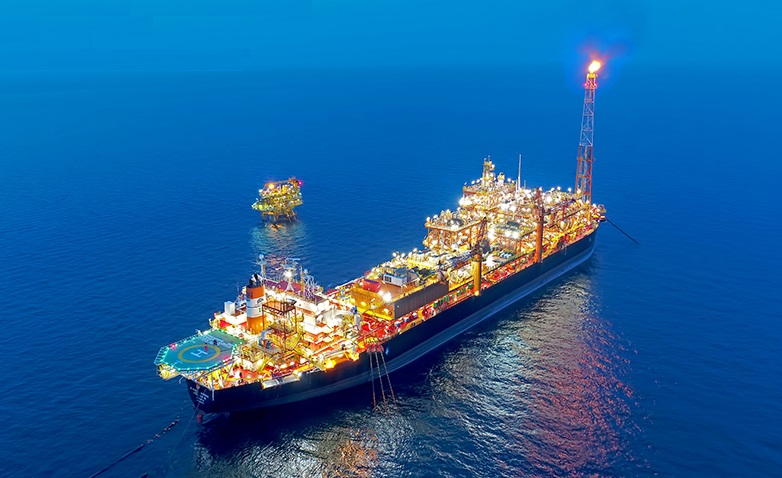
The main process systems on the FPSO are shown below. The incoming wellhead stream is separated into sour gas, condensate, and produced water. The condensate is stabilized and stored in tanks in the hull, and the stabilizer overhead stream is combined with the sour gas and treated with amine in the Gas Treating Unit (GTU) to remove the acid gas. The treated gas is dehydrated before passing through a hydrocarbon dewpoint control unit, and then exported via an undersea pipeline to the nearby island.

The interesting part of the facility is the Sulphur Block, consisting of a Carbon Bed Adsorption Unit (CBU), Sulphur Recovery Unit (SRU), Tailgas Thermal Oxidation Unit (TTO), Sulphur Degassing Unit (SDU), and Sulphur Storage. These units process the acid gas from the GTU to produce commercial-grade liquid sulphur for offloading and sales.
The Sulphur Block processes the acid gas produced in the upstream GTU. Its output is up to 25 MT/D of commercial-grade liquid sulphur for sales. To meet environmental requirement, the Sulphur Block must convert and recover 99% or more of the H2S contained in its acid gas feed as molten elemental sulphur. The SRU for this project is based on the direct-oxidation Recycle Selectox™ process licensed by UOP, which reacts the acid gas with air across a catalyst bed rather than in a burner as the first step in the Claus process in a conventional SRU.
Part in italics may be skipped (2 paragraphs).
The SRU contains four catalytic reactor stages: two front-end stages (a Selectox™ stage and a conventional catalytic Claus stage) followed by two back-end catalytic CBA stages. The cyclic operation of CBA catalyst beds is analogous to the adsorption/desorption operation of molecular sieve dehydrators. The CBA reactors are regenerated by using switching valves to divert the Selectox™ effluent gas through a reactor to heat its catalyst bed and vaporize the sulphur to desorb it from the catalyst. The sulphur vapor leaves with the gas and is condensed in the first pass of the sulphur condenser. Part of the gas from the condenser flows to the Claus stage, while the rest is sent back to the Selectox™ stage by a recycle gas blower to dilute the acid gas.
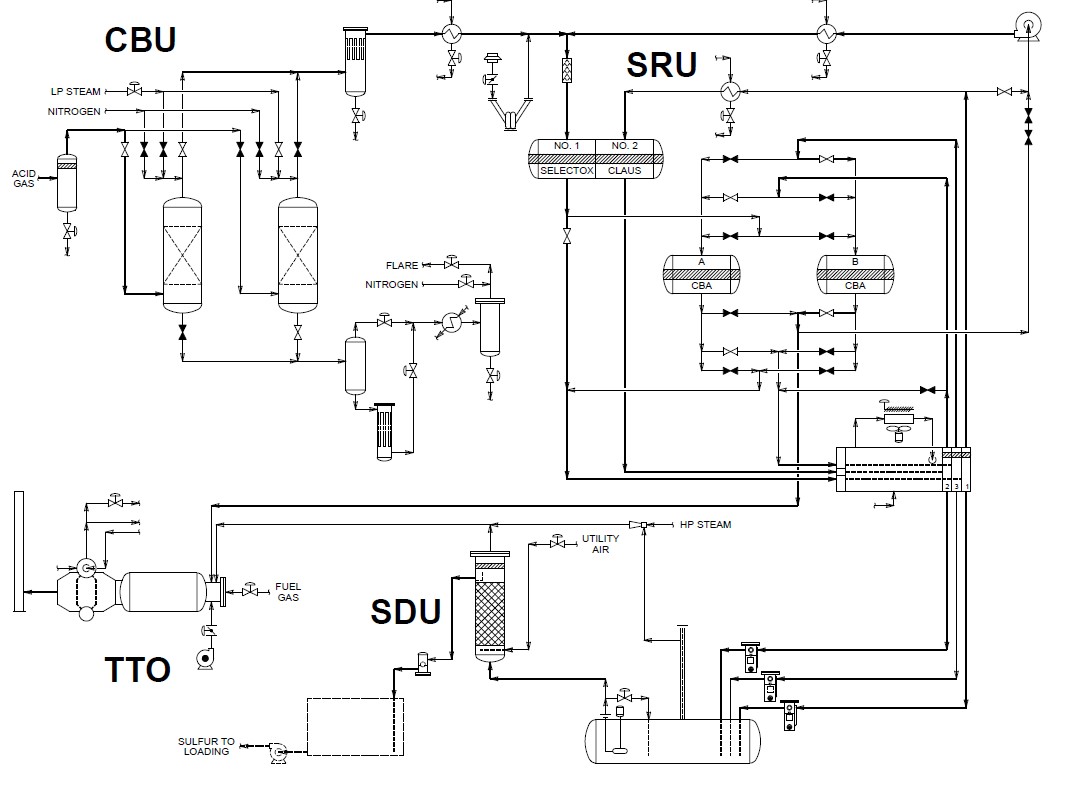
The sulphur produced in the Selectox™ and Claus stages and desorbed from the CBA stages is condensed and removed in the sulphur condenser and flows through sulphur drain traps into the surge tank. This raw sulphur product is pumped to the SDU for degassing, and the degassed sulphur flows into steam-heated storage tanks in the ship's hull. The tailgas from the SRU is routed to the TTO for incineration of the residual H2S and other sulphur compounds. The hot incinerated vent gas is used to generate HP steam for use in the SRU, and then vented to the atmosphere from the top of the vent stack.
In the field of marine transport, the storing and handling sulphur in liquid form has been common by means of barges since the 1950s and then by means of ships since the 1960s. Liquid sulphur is easily transported using heated pumps and piping. It is the most common mean of storage and transport for onshore facilities that requires a reliable heating medium. Liquid Sulphur is transferred from the FPSO to a barge alongside via a flexible stainless-steel hose. The hose is free-draining from the last block valve on the ship to the vessel so that it can be emptied completely after offloading. A thin layer of sulphur solidifies inside the hose after each offloading operation, but it breaks up easily as the hose is wound back onto its reel. The sulphur tanks on the barges are heated to keep the sulphur molten, so that it can be pumped onshore when the barge reaches port.
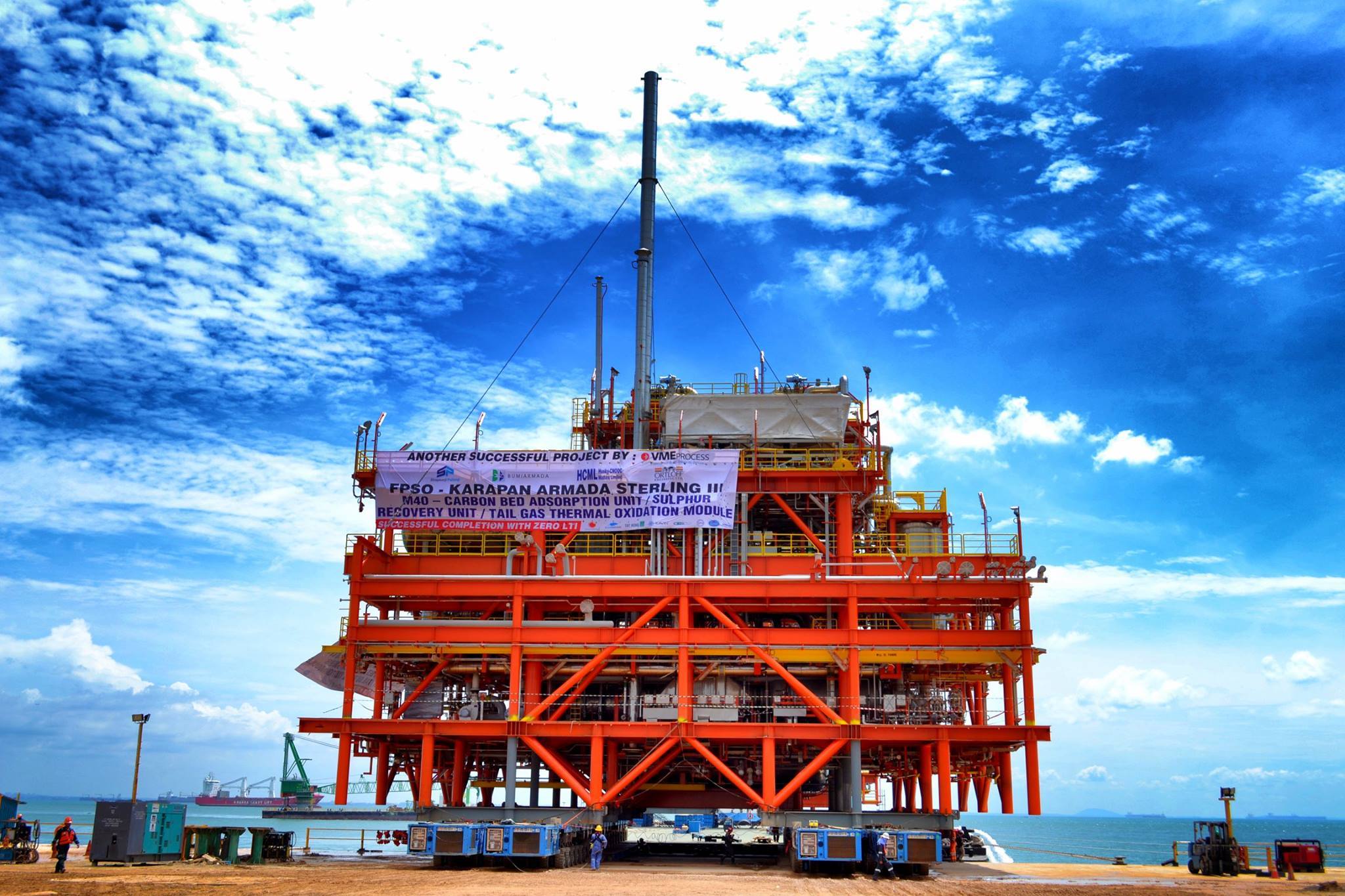
Simplicity characterizes liquid storage and handling at KAS3. A surge tank holds the raw sulphur production from the SRU before it is pumped to the SDU. The degassed sulphur from the SDU drains by gravity into either of two rectangular storage tanks in the hull (each sized for 2 months of sulphur production), until it is offloaded using centrifugal pumps. External heating panels using LP steam keep the sulphur molten in the surge tank and the storage tanks.
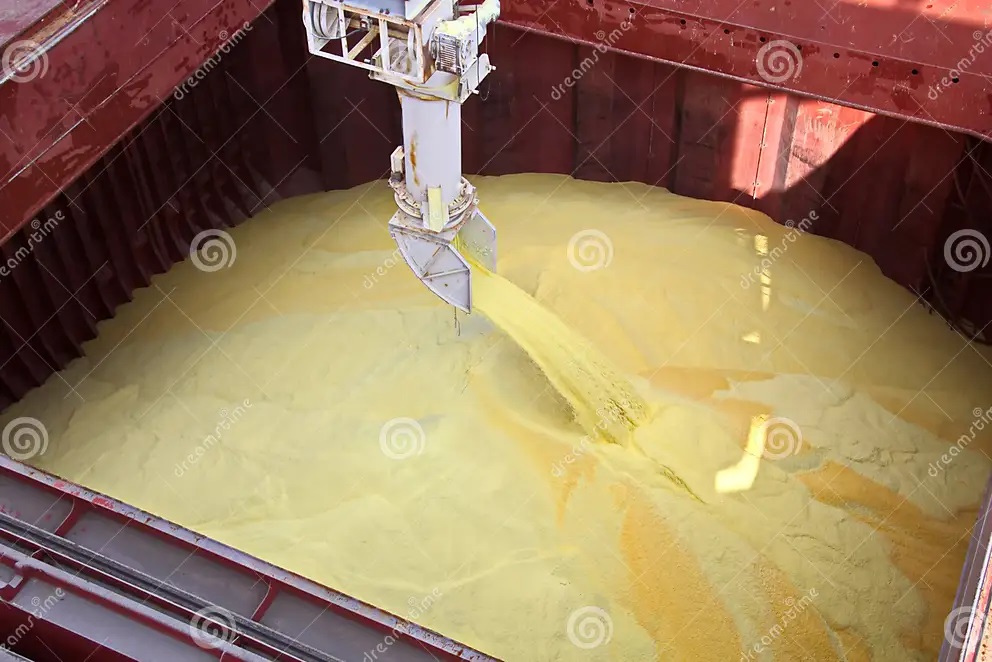
Bumi Armada’s own Karapan Armada Sterling 3 (KAS3) FPSO pioneered “a safe, environmentally responsible, and economic means to monetize offshore sour gas (high H2S) reservoirs. KAS3 is a unique project as it is the world’s first floating facility that has a large sulphur processing plant installed capable of producing molten sulphur which is used in fertilizer production, mining applications, and in manufacturing of various chemicals.
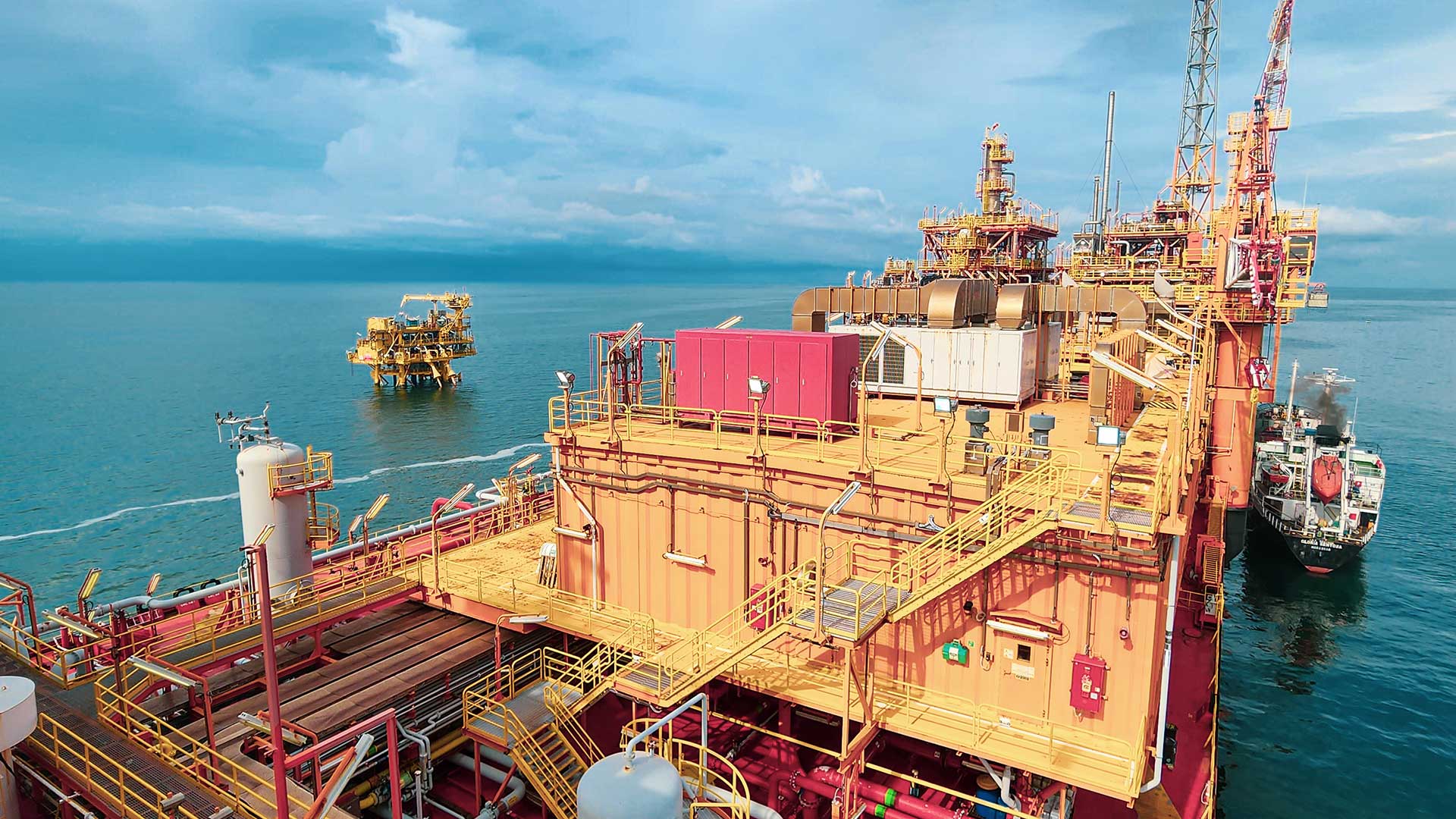
Successful operation of this facility gives Bumi Armada experience in the first link of the Carbon Capture and Value Chain – the Capture Block. As Armada has also reservoir injection experience, the Company covers all the segments of the whole Carbon Capture Process. Bumi Armada is also positioning itself to become an integrated oilfield services provider encompassing field development and production, starting from life of field surveys to production facilities, installation, and operations. The Company entered the field of sulphur extraction successfully, it may develop in the fields of subsea construction and gas infrastructure, including FLNG (Floating Liquefied Natural Gas).
BUMI ARMADA BERHAD
KLSE (MYR): ARMADA (5210)
http://klse.i3investor.com/web/stock/overview/5210
More articles on Bumi Armada Berhad Attempts Recovery after Financial Catastrophes of the Past

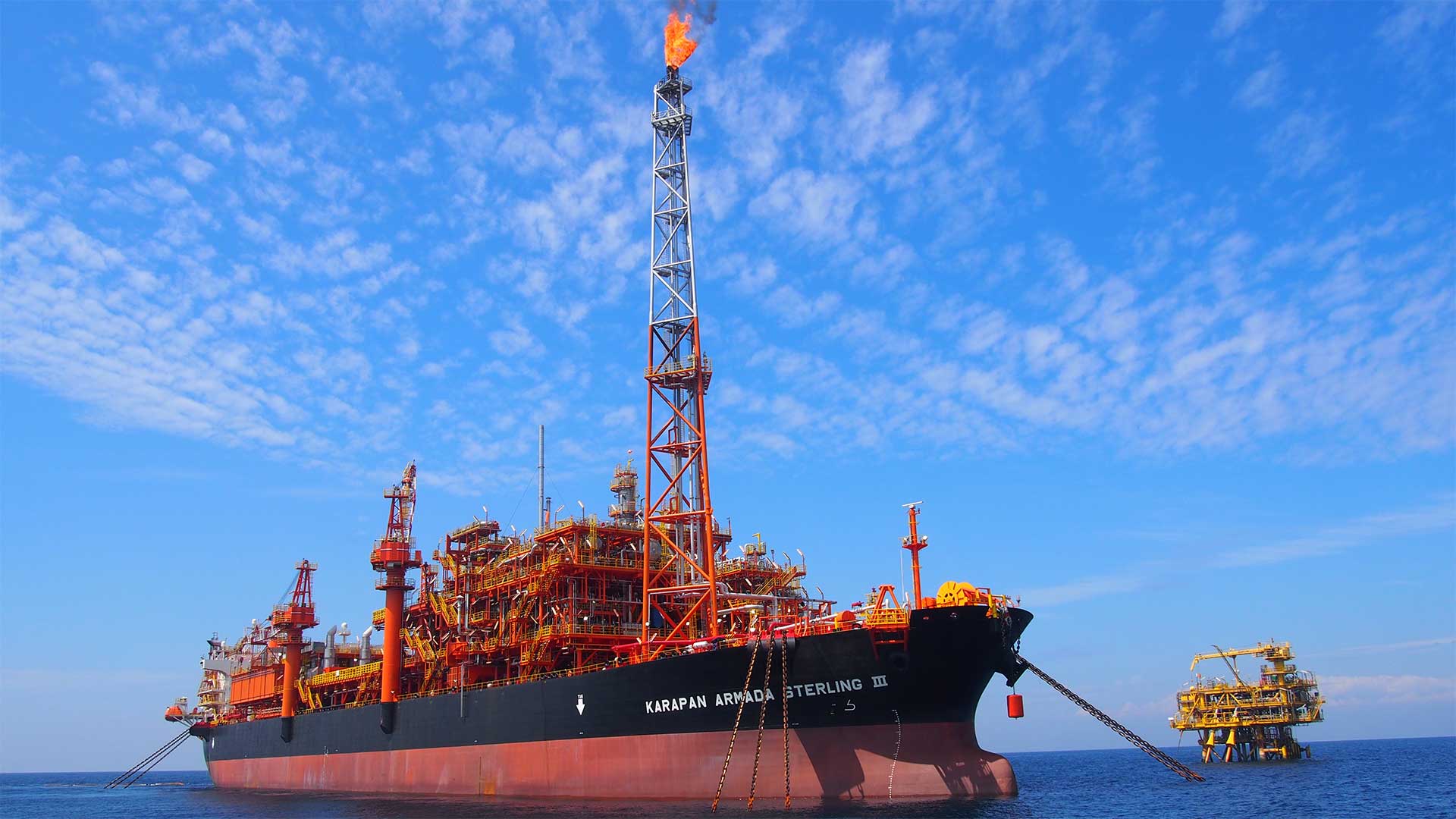
Created by Robert Waters | Sep 16, 2023
Bumi Armada attempts to venture into FLNG business by a new partneship in Indonesia Madura BD Field.











.png)









